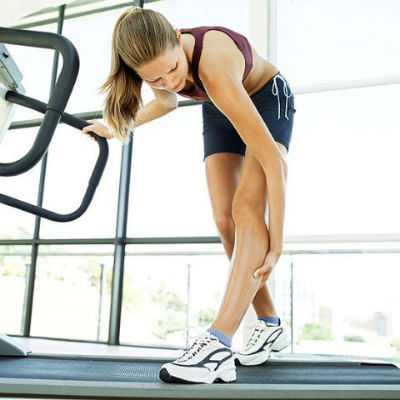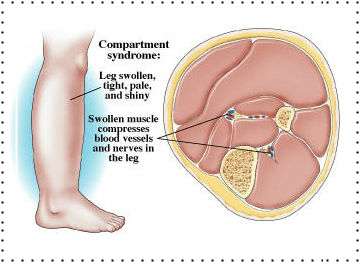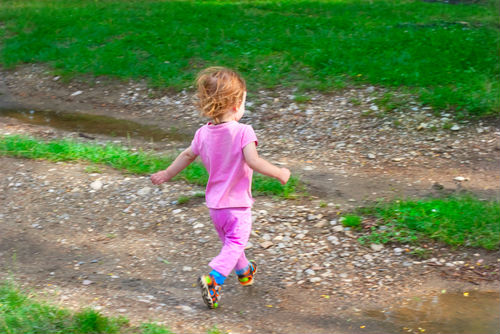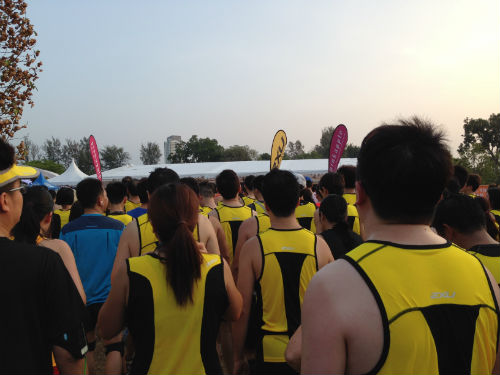You may not have heard of compartment syndrome, but runners do get it. I have been struggling with exertional compartment syndrome in my left leg (below the knee area) since January this year – whenever I run. According to orthopaedic experts, this injury happens because the leg muscles are being overworked and as a result, may have outgrown their fascia (a muscular sheath that binds certain groups of muscles together). I may have sustained this injury when I trained and completed my first Full Marathon at the Standard Chartered Marathon Singapore last December.

Exertional compartment syndrome happens in the leg when the muscles within a fascia compartment expand, restricting the flow of blood, thus causing pain. (Image from Victoriamassagetherapy.ca)
What is exertional compartment syndrome?
Exertional compartment syndrome usually takes place because of repeated exercises. It happens when the muscles within a compartment are expanded – restricting the flow of blood. Pain then rears its ugly head after the commencement of exercise – consistently at a certain point.
Symptoms of Exertional Compartment Syndrome
If the pain is ignored and exercise is continued, the pressure will keep on continuously building up inside the affected muscle compartment until the person is forced to stop, because of excruciating pain. There is often in the beginning, a very tight, cramp-like sensation in the affected part of the body that slowly builds up to an unbearable level – if the victim continues the exercise that is causing the pain. However, upon stopping the activity that is causing the pain, the symptoms gradually disappear. Depending on how serious the condition is, these symptoms may take from a few minutes to even a full day to dissipate. In my case, the pain in my left leg usually came on at the moment that I started running and this would increase gradually to breaking point if I carried on. This would be roughly about two to three kilometres into my run. But once I stopped running, the pain would disappear after about an hour or so. I found this to be the most infuriating thing I have ever experienced, because I don’t have any pain – until I start to indulge myself in my favourite physical activity – running. Then the moment I start to “get into the (running) zone”, compartment syndrome would strike. In short, it meant that I simply could not run much at all – and this was not only affecting my mood due to a lack of running, but also hampering my training for upcoming races.
Common Types of Compartment Syndrome
There are four compartments in the lower leg that can be affected by compartment syndrome. The two most common types in athletes are anterior compartment syndrome (which affects the front part of the lower leg and is commonly misdiagnosed as shin splints) and the deep posterior compartment syndrome (which affects the back part of the lower leg).
Treatment of Compartment Syndrome
Some of the more conventional treatments may include applying ice or heat treatment onto the area, as well as using electrodes and having deep sports massages. But according to my physiotherapist (physio), these types of treatment only focus on the symptoms and do not address the cause of the pain – so they usually do not work. The treatment for exertional compartment syndrome is not fixed. Some doctors advise that you rest and have general physio treatment (such as massage rubs and heat/ice treatment). Others treat the cause, which can include overtraining, wearing ill-fitting running shoes or even having an ankle sprain that may not have healed properly.
In practice, it is probably best to identify the cause before the treatment of each compartment syndrome case. Surgery, which is often brought up as a possible treatment, is seen as a last resort. Patients are only recommended surgery when absolutely nothing else works. Surgical treatments have a 70 per cent success rate for females and 90 per cent for males, and there is no guarantee that the injury won’t come back to haunt the victim. In my case, the physio felt that my running style and striking pattern could have contributed to this frustrating injury. So he has taught me a new, pain-free style of running that is similar to how young children do it. This is to lean from the ankles, land on the whole foot while using the hip flexor muscles to pick the foot up. At the same time, smaller steps are taken.
The Road to Recovery
Since my diagnosis and treatment, I have put the new running style into practice – and to my utter delight, it seems to be working! In the last week leading up to my 2XU Compression Run, I managed to complete two 5km runs and a 6km one. So there has definitely been some progress. Before that, I was barely even able to run two or three kilometres without pain!
A Breakthrough!
The fact that I have actually managed to complete the 2XU Compression Run (21km Category) last weekend was a complete breakthrough. From barely being able to run two or three kilometres in January and most of February, I have now progressed to running 6km continuously – and even completed a Half-Marathon with a combined running/walking strategy. During my 21km race, my compartment syndrome acted up slightly around 2km and my leg started to seize up. But after stopping to rest for a few minutes, the pain seemed to go away – and didn’t return to haunt me for the rest of the race. I must definitely say that being able to run felt so good and liberating again – even though my stamina was nowhere near what it used to be. As a result, my timing for the 2XU race was a far cry from my personal best of 2 hours 4 minutes and 46 seconds. Yes, things are definitely looking good for me. Now that I am able to run and get back into a training regime, I am now looking forward to my next two upcoming races in April and May – all thanks to my physio.




My guess is that CECS is unique for people who engaged in running.
I was reading a very technical running article on forefoot running’s effect on CECS: http://www.ncbi.nlm.nih.gov/pmc/articles/PMC3230159/ This article is a very long read though. So read it when you have the free time.